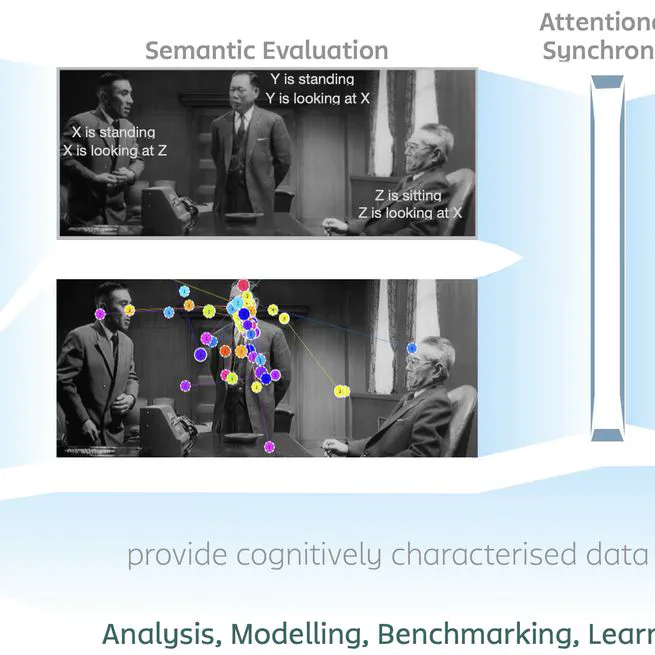
The Observer Lens: Characterizing Visuospatial Features in Multimodal Interactions
This doctoral thesis examines how visuospatial features both low- (e.g., kinematics) and high-level (e.g., gaze, speech) shape perception and attention in human interactions, combining cognitive science and computational modeling to inform human-centric technologies.
May 24, 2024

Attentional synchrony in films: A window to visuospatial characterization of events
This study analyzes how visuospatial features in film scenes shape attentional synchrony, using eye-tracking data to reveal how scene complexity guides visual attention during event perception.
September 22, 2022